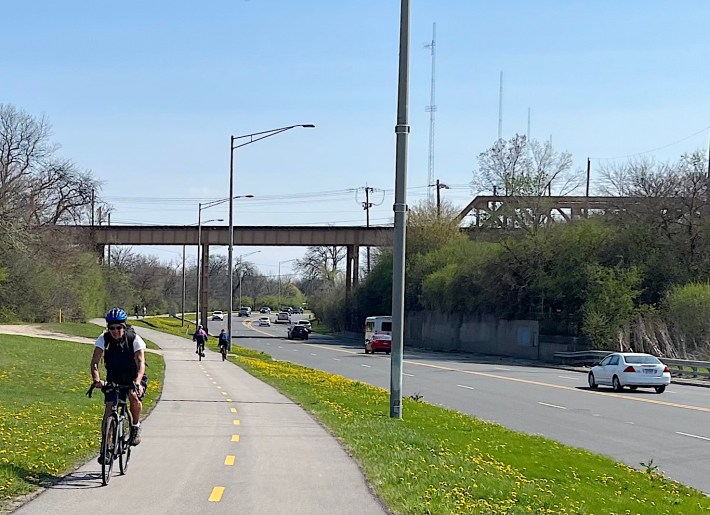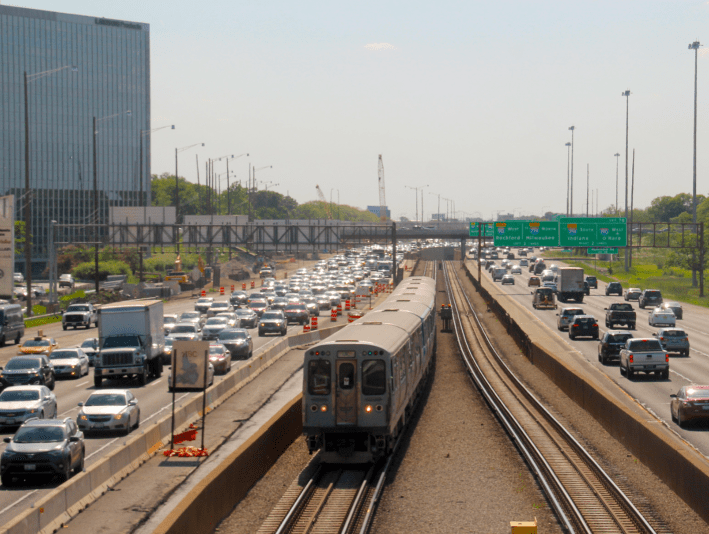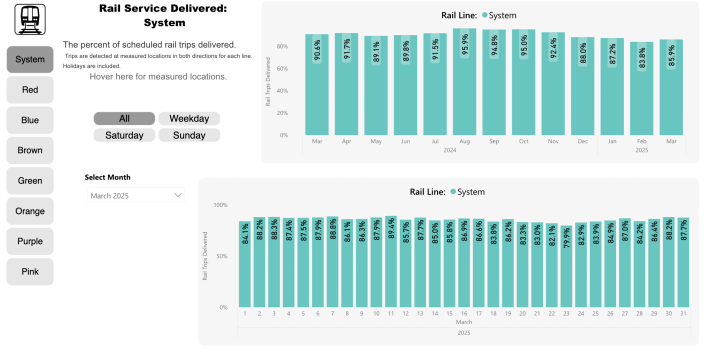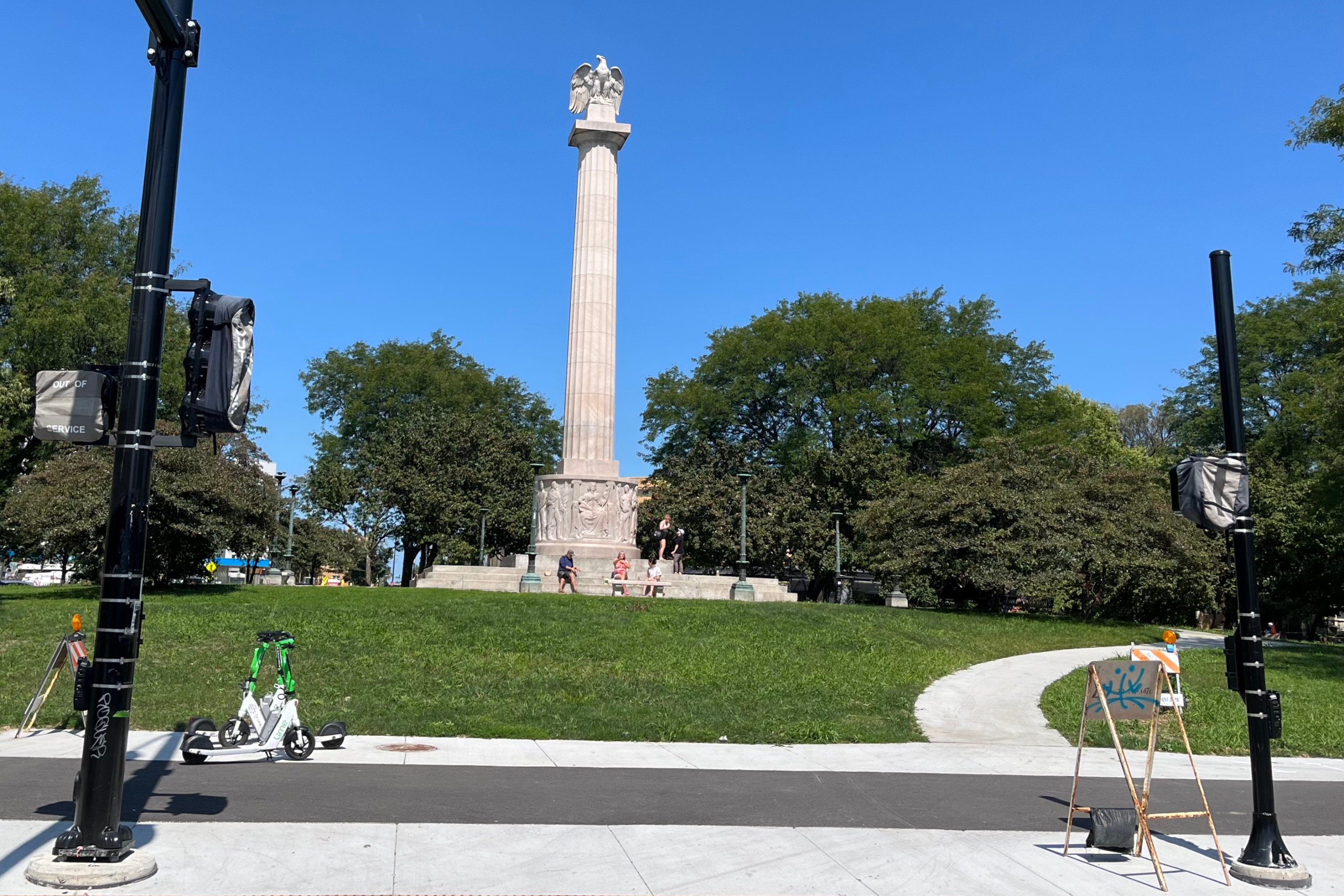
By now you know the drill. The CTA announces that it's significantly increasing scheduled bus and/or train service in an effort to restore or surpass 2019 pre-COVID service levels. Streetsblog later asks the transit data whizzes at the grassroots transit advocacy group Commuters Take Action (CTAction) for their POV on the claim.
CTAction usually tells us the numbers show the CTA has delivered nowhere near the service levels its new schedule said would be provided, usually due to staffing issues. That results in much-despised "ghost runs." The advocates say it's counterproductive for the transit agency to overpromise and underperform, which frustrates customers and deters ridership. Here are just a few headlines from our stories about this phenomenon in recent years:
• "Commuters Take Action accuses CTA of 'lies' about restoring Blue Line to pre-Forest Park Rebuild service levels." (11/9/23)
• "CTAction: It’s silly for CTA to update timetables to reflect 'more scheduled rail service' when it can’t deliver its current schedule" (7/11/24)
• "Scheduling like it’s 2019? The CTA’s announcement that it’s returning to pre-COVID rail service levels is generating some controversy" (11/6/24)

One might argue that CTAction holds the CTA to an unrealistic standard, and it's truly difficult to make the trains run on time. On the other hand, the group serves as an important "canary in the coal mine." If they squawk that the percentage advertised transit runs that actually materialize is unreasonably low, it's worth paying attention.
All right, with that in mind, let's take a look at the current "they said, they said" scenario.
What the CTA announced
On April 19, the agency published the press release, "New CTA Rail Service Schedules Begin This Weekend: Agency adds more service to the Blue and Yellow lines; and 'Skokie Swift' trains to resume posted speeds."
The CTA previously originally heralded the upcoming Blue/Yellow schedule changes on March 17, and CTAction was skeptical. "The changes described in the press release sound good, but it's hard to believe they will be actually fulfilled," cofounder Fabio Göttlicher told Streetsblog back then. He pointed to some unimpressive recent data on CTA’s performance metrics dashboard as reason for his lack of confidence that the agency could put its money where its mouth is.
As for the recent CTA statement that the Skokie trains would get swifter, Streetsblog readers will recall that in November 2023 a Yellow Line train crashed into a snow removal machine at the Howard station, injuring 19 people. That route was shut down for a full two months, and when the line finally reopened in January 2024, the maximum train speed was reduced from its usual 55 mph to only 35. Can you imagine a similar collision resulting in a local expressway being shut down for more than two days, let alone two months, or its speed limit reduced by 20 mph for [checks notes] almost a year and a half?

Anyway, the April 19 news releases said the new Blue and Yellow service would start on 4/20 (perhaps not the most auspicious date to launch a new transit initiative). "The spring schedule reflects the CTA’s ongoing commitment to providing increased scheduled services in 2025, and is the result of ongoing, aggressive recruiting and training efforts to strengthen the rail workforce," the CTA stated. Here's a rundown of the planned upgrades:
- "Blue Line O’Hare Branch will have two extra trips added each weekday and six extra trips added on Saturdays. Sundays will see five additional trips."
- "Blue Line Forest Park Branch will have 30 extra trips added each weekday,17 extra trips added on Saturdays, and two extra trips added on Sundays."
- "Yellow Line early morning weekday service will better align with the Red Line early morning weekday service. The first northbound Yellow Line train will depart Howard at 4:40 a.m., and the southbound service from Dempster-Skokie will start at 4:55 a.m."
The O'Hare Branch improvements were supposed to be mostly happening on weekday mornings and afternoons, and weekend mornings. The CTA also promised shorter waits between trains on the other branches in the mornings and late evenings Monday through Saturday.
The agency said the O'Hare Branch upgrades were intended to help ease the pain during current Kennedy Expressway bridge construction, for people who would otherwise travel by car. Hopefully, this will encourage many of them to further appreciate the benefits of car-free commuting, and make a permanent mode switch.

Meanwhile, forest Park Branch Blue trains are supposed to have 7.5-minute headways between 6:30 p.m. and the witching hour on weekdays, and between 9 p.m. and the Midnight Hour on Saturdays. So that was an advertised 50 percent time savings off the previous 15 minute headway schedule for those times.
Regarding the 35 mph to 55 mph maximum speed limit increase to and from "the Ellis Island of the North Shore," the CTA said this is being done "after a rigorous safety review and implementation of associated safety measures." Unfortunately, 'L' operators still can't drive 55, but only 35, in a few locations, including the area around the Howard station, "to ensure safe operations."
CTAction responds
In the advocates' April 24 response, they seemed more fed up than usual with what they consider the transit agency's "all hat and no cattle" announcements about service improvements. "New 'L' schedules dropped this week, but not that anyone should care." they wrote. Ouch, that's a CTA burn!
"It’s not worth dissecting the ~9 percent service 'increase', since it’s all strictly on paper," CTAction continued. "In reality, the 'L' service this week is exactly the same as last week. With the previous iteration of 'L' schedules, the percentage of delivered service has hovered around 85 percent for the past few months (CTA Performance Dashboard , p. 15). Why increase something that isn’t being met?"

"And it seems like the commendable 'L' operator gains from 2024 are starting to wane, with the agency now having 15 fewer operators than it did in December 2024, and 54 less than it did pre-pandemic (Performance Dashboard, pg. 4)," CTAction added.

"So why does the agency insist it can deliver 11 percent more service than 2019 while having 7 percent fewer people to do it?" CTAction asks in their statement. "We wish we knew the motivations behind these reckless schedule updates. I [presumably cofounder Fabio Göttlicher] am sick of having to tell folks 'the schedule says the train comes every 6 minutes but it’s really more like every 10 to 15 minutes.' Perhaps the scheduling and operations departments at the CTA should talk to each other once in a while."
I suppose one could take a more glass-half-full attitude. If the CTA was able to provide about 85 percent of scheduled train runs in March, what if it eventually turns out that they are still able to provide roughly 85 percent of about 9 percent more scheduled trips in May? That's would still be a service improvement, right?
But, hey, with apologies to the rock mockumentary "This Is Spinal Tap," the CTA media relations department is like ice, and CTAction is like fire. So maybe my role is to be somewhere in the middle of that, kind of like lukewarm water.
Read the CTA press release here.
Read the CTAction statement here.

Did you appreciate this post? Streetsblog Chicago is currently fundraising to help cover our 2025-26 budget. If you appreciate our reporting and advocacy on local sustainable transportation issues, please consider making a tax-deductible donation here. Thank you!




